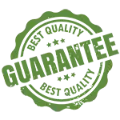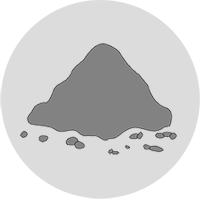
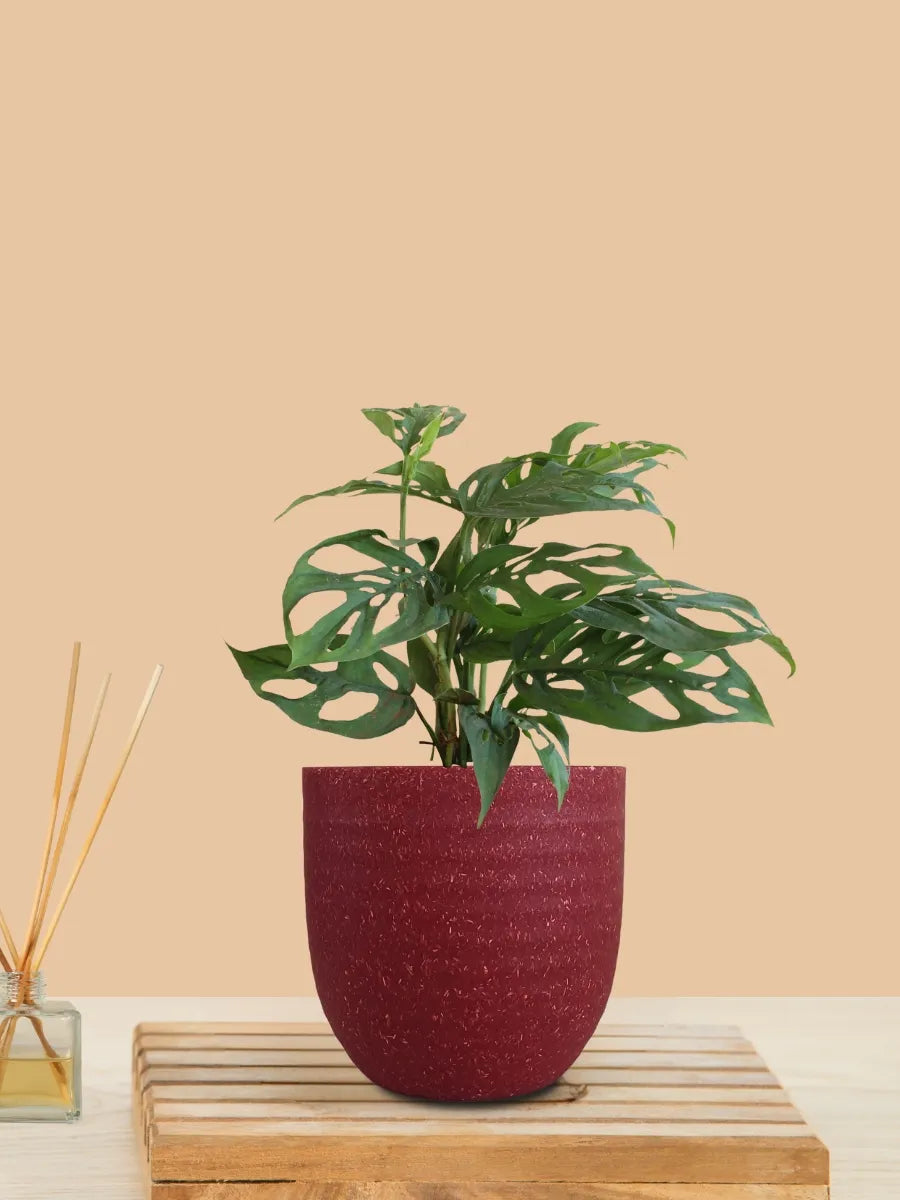
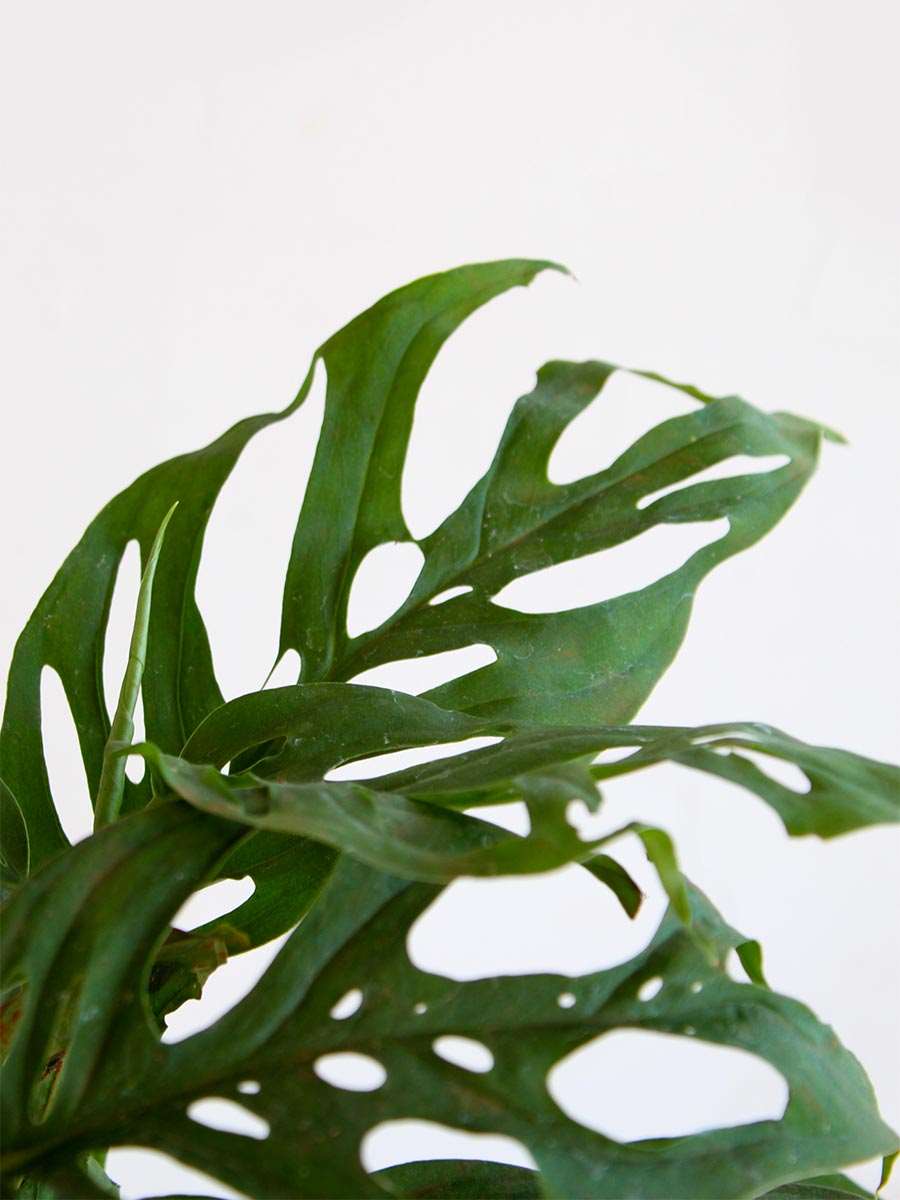
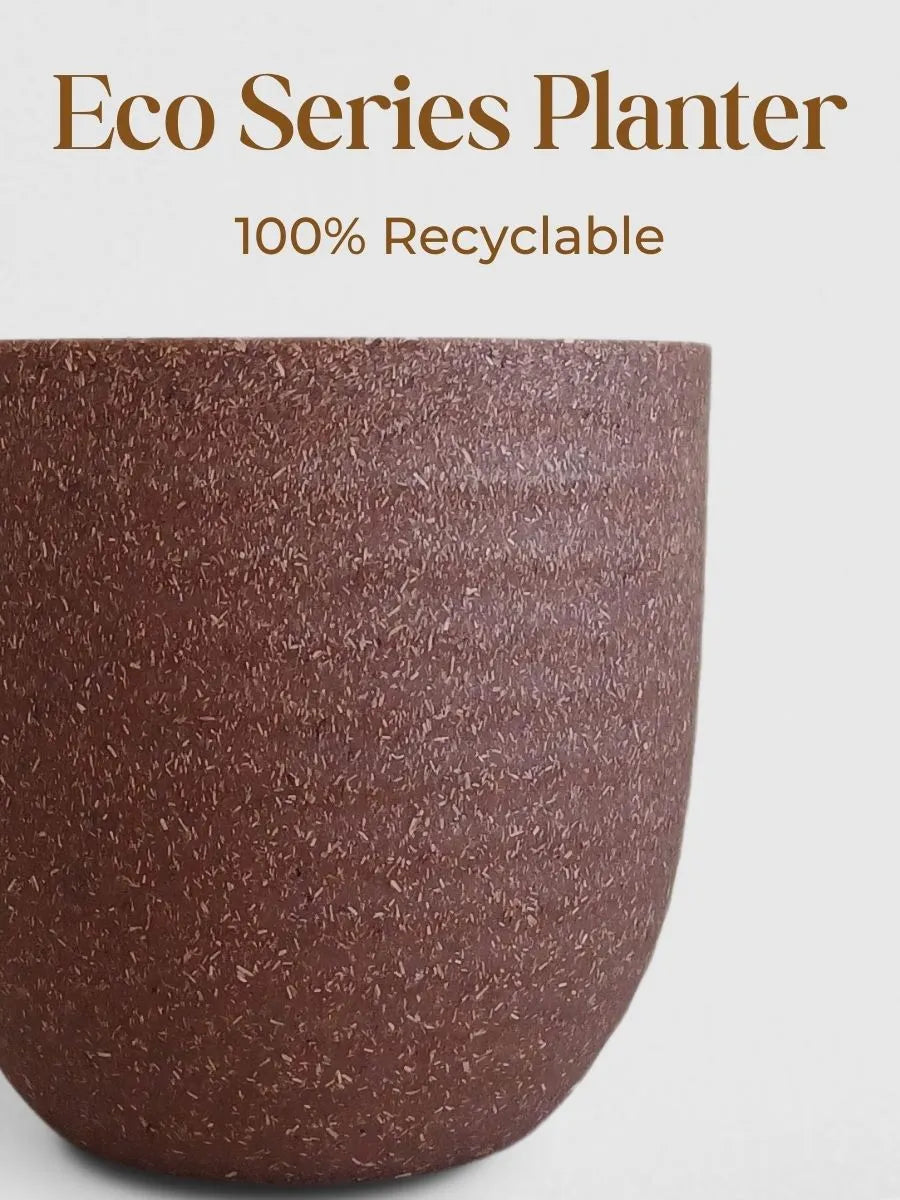
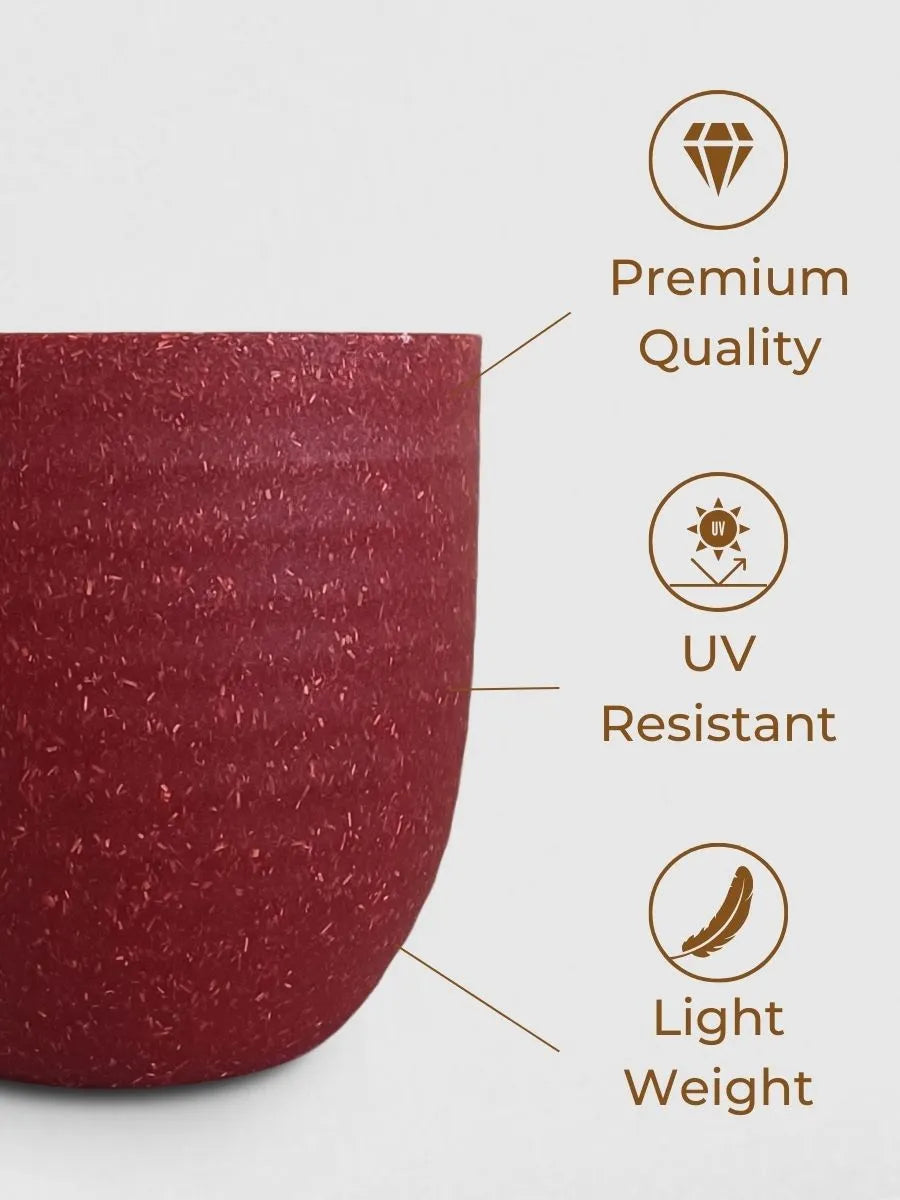

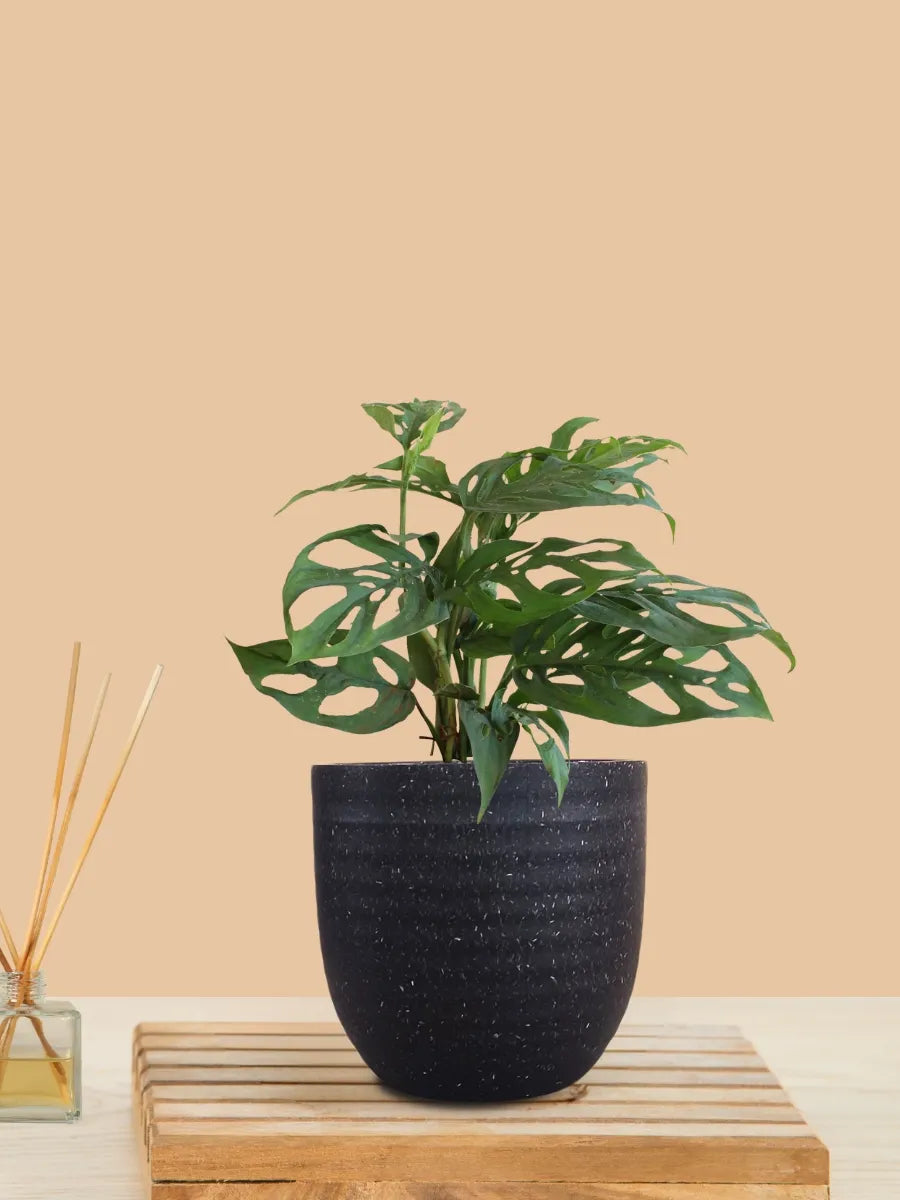
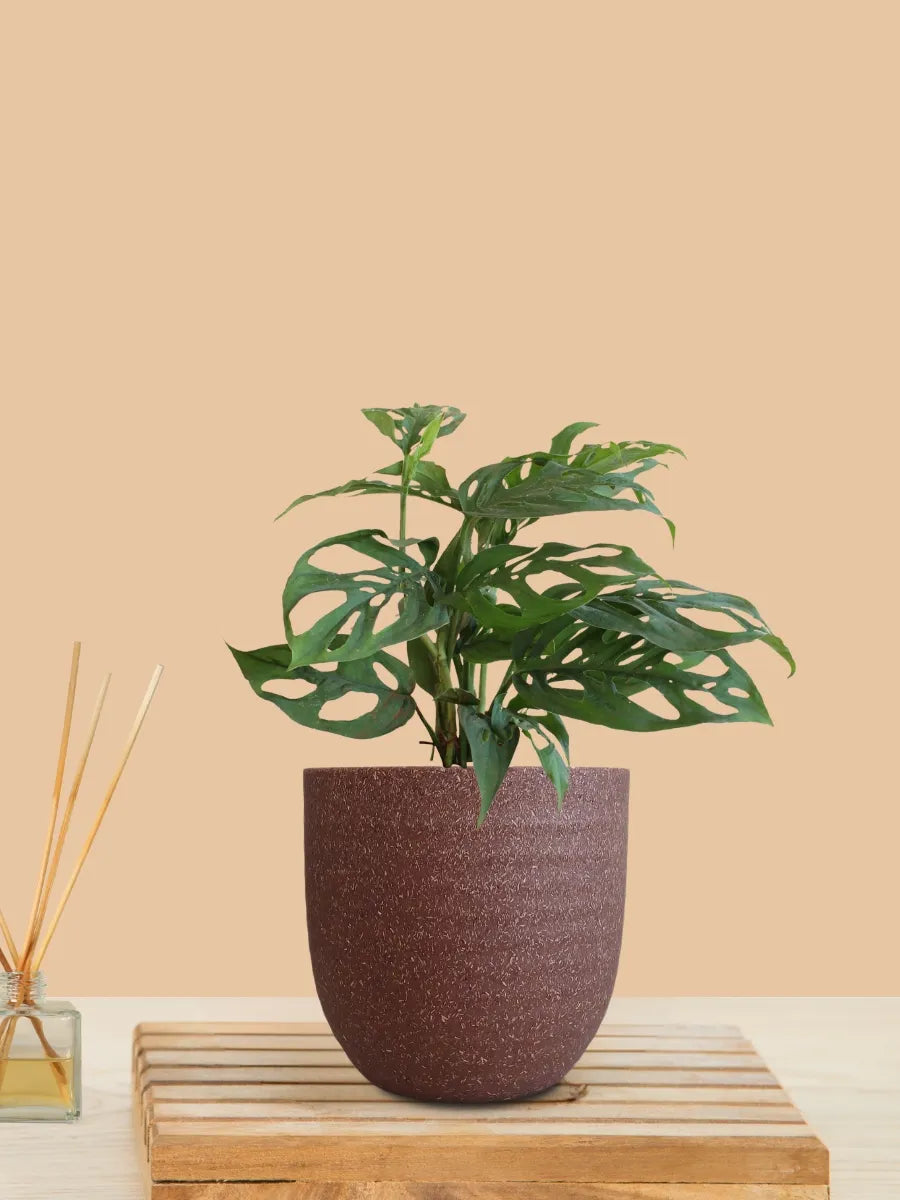
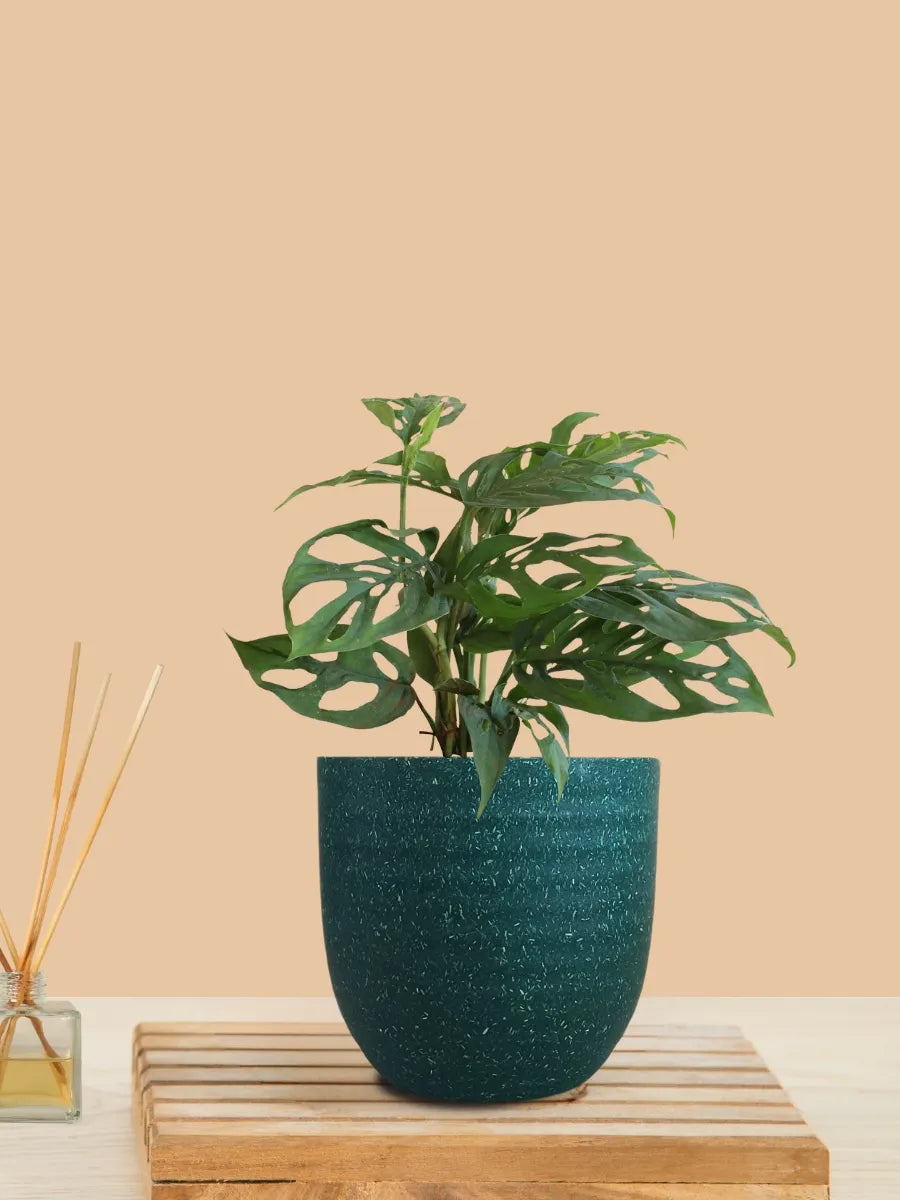
Size Guide
25,000+ Smiles Delivered
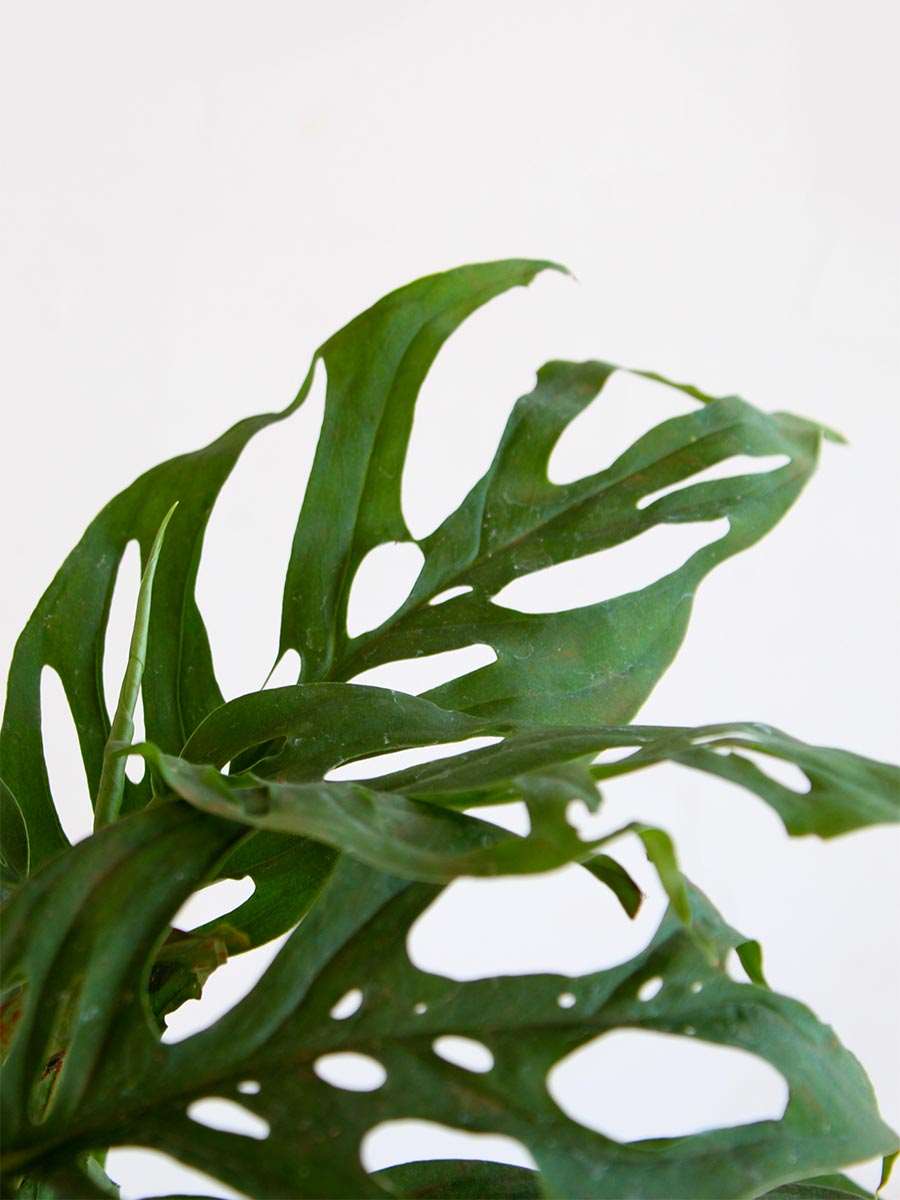
About Broken Heart Plant (Small) in Eco Pot
Also Known As
Also Known As
Monstera Adansonii, Adanson Monstera, Swiss Cheese plant, Five Holes plant
Keep In Mind
Keep In Mind
The Trending 25
Shop our Bestsellers - The plants that everyone is buying
-
Indoor Plants Combo for Home Decor in Eco Pots (Small)
Regular price ₹ 1,199Regular priceUnit price per₹ 2,199Sale price ₹ 1,199Sale -

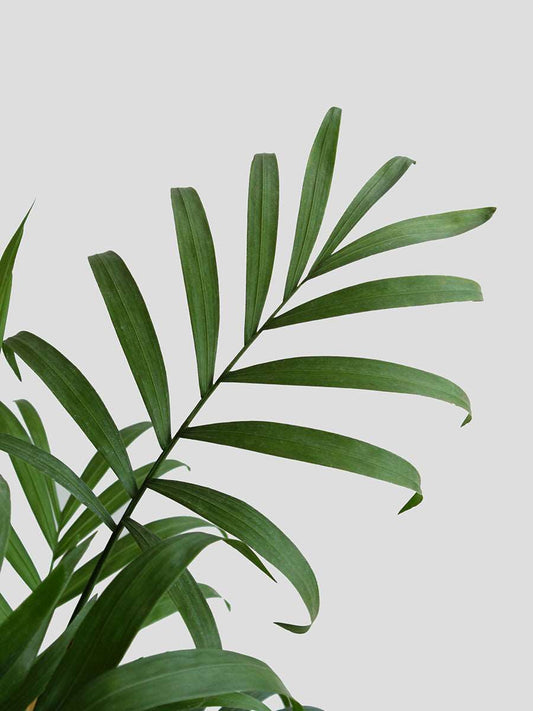 25% Off
25% OffBamboo Palm (Large)
Regular price From ₹ 899Regular priceUnit price per₹ 1,199Sale price From ₹ 899Sale -
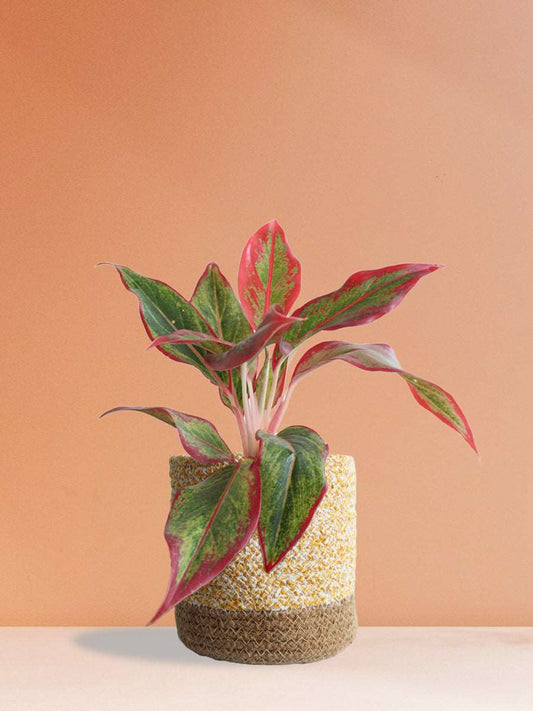
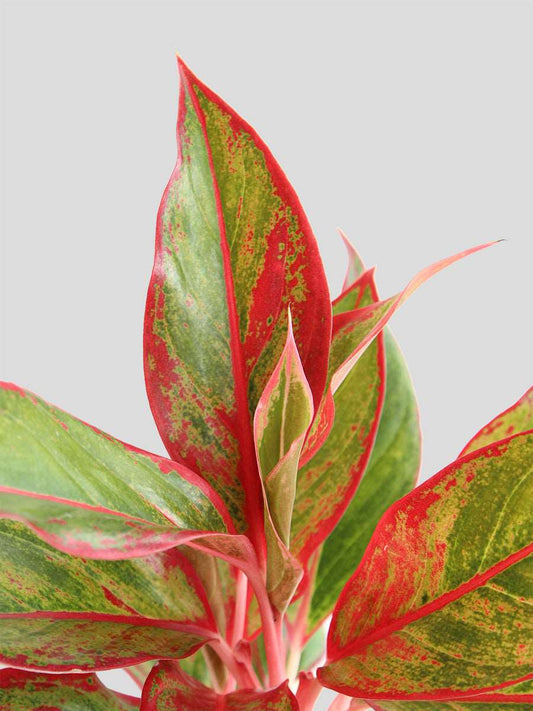 37% Off
37% OffAglaonema Red Lipstick (Medium)
Regular price From ₹ 499Regular priceUnit price per₹ 799Sale price From ₹ 499Sale -
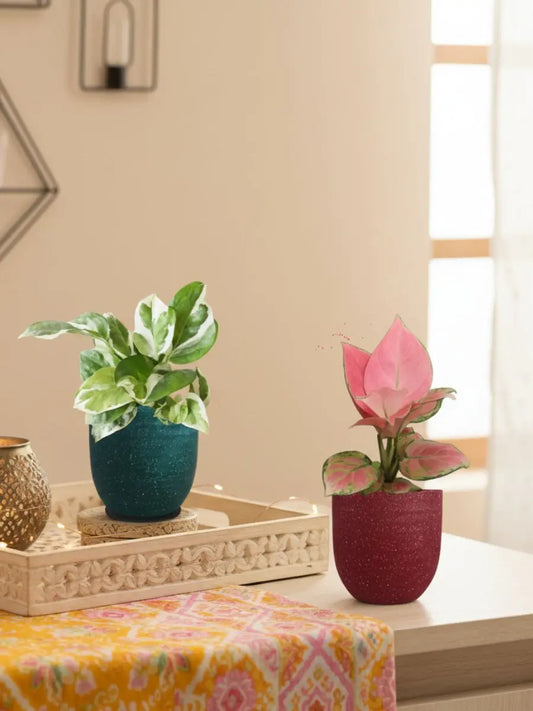
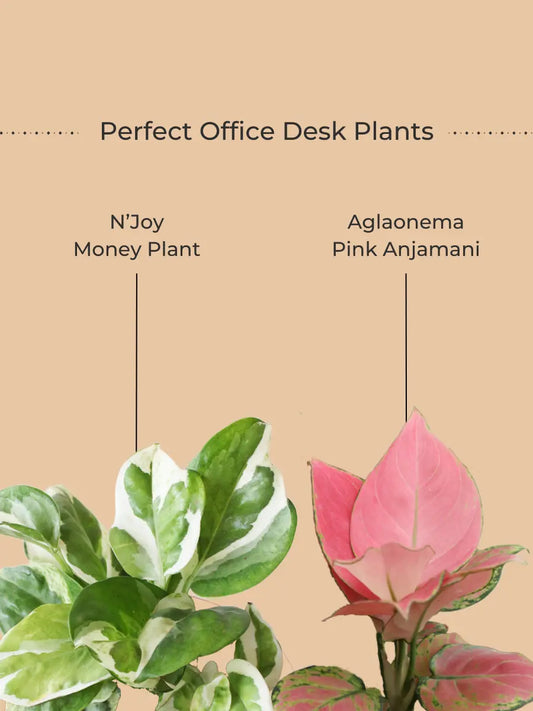 25% Off
25% OffOffice Desk Plants Combo (Small)
Regular price ₹ 936Regular priceUnit price per₹ 1,249Sale price ₹ 936Sale
Buy Broken Heart Plant (Small) in Eco Pot Online
Read on to discover more about Broken Heart Plants' attributes, benefit placement suggestions for your home, and maintenance instructions for year-round aesthetic appeal.
Why You Should Buy Broken Heart Plants
Looking for beautiful and unique plant additions to your interior settings? Then, look no further than a Monstera Broken Heart Money Plant - a stunning blend of nature's beauty and wealth! A treasured addition to any plant enthusiast's collection, this unique plant is also known as the Philodendron Broken Heart. Many homes have pillows and frames with the Monstera leaf. This is because many cultural practices consider this beautiful houseplant a symbol of elegance, resilience, and financial prosperity. Moreover, as a symbol of good fortune, this makes the best gift for every occasion, like a housewarming , a wedding , or other new beginning events. So, elevate your living space and boost the abundance that Greenkin’s Monstera Broken Heart Plant offers.
Why Choose Greenkin to Buy Broken Heart Plants
For plant enthusiasts, Greenkin is one of the most renowned online plant shops. We offer premium quality small, medium, and large versions of the well-known Broken Heart Plant. Every order includes a high-quality soil mix to support strong, healthy growth. Broken Heart Plant, more often known as the "Swiss cheese plant," is another striking vine with unusually shaped leaves that resemble hearts and feature large holes. Our horticulturists inspect each plant before shipping to ensure its health, then pack it carefully to avoid damage during transportation.
Things to Consider Before Buying a Broken Heart Plant
Before buying a Broken Heart Plant (Monstera Adansonii), consider these factors:
- Carefully consider where you want to put your broken heart plant. This plant thrives in bright, indirect light. Also, a shaded, filtered sunlight habitat is ideal for it.
- How big can a broken heart plant get? Yes, it can grow big! Consider your space when deciding to bring one home. Its large, gorgeous leaves may cover any empty spaces. A moss pole or trellis in the container can help it develop and look like art.
- Is pet safety important around broken heart plants? No, Broken Heart Plant is considered toxic due to the presence of isoquinoline alkaloids in it if consumed, so be cautious if you have pets. It is advisable to keep the plant away from both children and pets. Also check our pet friendly plants and children friendly plants collections.
Benefits of Having a Broken Heart Plant at Home
Besides its aesthetic beauty as a beautiful vine with heart-shaped leaves with big holes, the Broken Heart Plant offers many benefits, such as:
- Health Benefits of Having a Broken Heart Plant at Home: The broken heart plant has several health benefits. Commonly, it can help you breathe in a peaceful and pure atmosphere by removing carbon dioxide and VOCs. Moreover, traditional medicine uses broken heart plants to treat respiratory and digestive issues because of their anti-inflammatory and antioxidant properties.
- Vastu Benefits of Having a Broken Heart Plant at Home: The broken heart plant has many benefits, according to the Vastu Shastra. It is commonly believed that when grown indoors, the plant should face southwest. This will not only help the plant grow quickly but also bring positive vibes and happiness to your surroundings.
Uses of Broken Heart Plants
Broken Heart Plant can be used to decorate your home and also as a gift:
- Table-top Decoration: The fenestrated leaves of the Broken Heart Plant make it a popular interior ornament. It gives rooms a tropical, ethereal feel. Monstera's natural pattern and shape draw attention to empty places and make spectacular shadows in business buildings, public greeting areas, and home corners.
- Hanging Baskets and Wall Art Display: The Broken Heart Plant makes great live artwork. It loves to vine, so it may be placed in a hanging container or trained to grow along a wall or shelf for a green backdrop.
- Broken Heart Plant for Gifting: "Broken Heart Plant" is named after its broken heart shaped leaves, which resemble a broken heart. Many people use the plant as a reminder that plants can help with emotional healing and strength. For the best well-being wishes, it makes a wonderful gift. Additionally, Vasu stated that this plant is symbolic of positive vibes and happiness, making it a great gift for many occasions.
Placement Guide for Broken Heart Plant
Even without a green thumb, the Broken Heart Plant is easy to care for. Some placement guides for placing Broken Heart Plant are:
Place the Broken Heart plant in a southwest window with moderate indirect sunlight, according to Vastu . Also, keep the plant from getting scorched from direct sunlight. If you place the plants outdoors, place them in a shaded, indirect sunlight spot.
As a trailing plant, Broken Heart Plant looks fantastic on a hanging planter or bookshelf. Keep the Broken Heart Plant near a window with medium-to-bright indirect light. Some morning direct sunlight is okay, but it loves bright, filtered light.
The broken heart plant loves humid climates, so placing them in the bathroom is also a good idea. Do not place the plant in AC rooms, as air-conditioning makes the room dry. If an AC is present in the room, add a humidifier, or mist the plant twice everyday.
How to Care for Broken Heart Plants
Although the Broken Heart Plant can survive in any environment, follow these simple care requirements for optimal growth:
- Lighting Requirements of Broken Heart Plant: The Broken Heart Plant prefers indirect, bright light. Additionally, you can put the plant in a spot with no more than two hours of direct sunlight per day. Yellow leaves indicate too much light. Broken Heart Plant can endure low light; however, its leaves may grow more fragile and less lacy.
- Watering Requirements of Broken Heart Plant: Water the Broken Heart Plant when the top inch of soil feels dry. Please be very thorough when watering. Try watering it until the base drainage holes fill with water. Instead of "overwatering" your roots, "thorough watering" may provide plenty of oxygen.
- Humidity Requirements of Broken Heart Plant: The Broken Heart Plant prefers moderate to high humidity. Add a humidifier or place a bowl of water close to the plant to increase humidity. Usually, a saucer or water container is under a hanging pot. And adding a pebble tray to the pot increases saturation.
- Soil Requirements of Broken Heart Plant: The Broken Heart Plant benefits from loose, draining soil. Consider a container plant soil mix with peat moss, coconut coir, perlite, and vermiculite.
- How often should fertilizers be used for Broken Heart Plant: Fertilise your Broken Heart plant every two weeks during the spring and summer using a balanced, properly soluble fertiliser. During the autumn and winter, avoid using fertiliser on your dormant Broken Heart Plant plants.
- Is Pruning Needed for Broken Heart Plant: Avoid leggy broken heart plants by pruning. Take care not to cut the plant's vines off at the end. Remove the vines further back, out of sight. The following pruning will encourage thicker, more beautiful Broken Heart Plant vine growth.
FAQ
The Broken Heart Plant, the Swiss Cheese Plant, is a tropical vining houseplant with intriguing pierced (fenestrated) leaves. This unique characteristic lets light in and makes the plant's foliage translucent. It is scientifically known as Monstera adansonii and is native to Central and South America.
Choose Broken Heart plants thoughtfully, considering their light requirements, mature size, and safety for pets and children. Make sure the plant you desire is right for your home decor.
Broken Heart plant leaves have tiny holes that resemble broken hearts, hence their name. As the plant grows, these holes become visible and give the leaves a unique look that sets them apart from other houseplants. Its pattern makes it a popular choice for tropical green decor in living spaces. It looks beautiful when basket-wrapped or placed as 3-D wall art.
A broken heart plant is named because of its leaves' natural holes that resemble broken hearts. Though they look like holes (or broken holes), these are Echeveria purpusii phenotypes. The plant grows such beautiful, distinctive leaves with more holes as it matures.
The Broken Heart plant, a vastu symbol of luck and positive energy, adds charm and luck to your living space. This plant, like other plants, improves indoor air quality by creating oxygen, resulting in healthier and more positive environments.
Monstera Adansonii, which is also called "Broken Heart," is a kind of money plant that is considered to bring wealth and happiness. This makes it a popular gift for housewarming, weddings, and new beginnings.
Yes, the Broken Heart plant purifies the air inside by getting rid of VOCs and carbon dioxide. It also gives off a gentle, calming scent.
Yes, the Broken Heart plant is quite simple to care for. It does well inside and requires little care. Light, water, and enough moisture to maintain an adequate humidity level are all it needs to grow inside.
No, the Broken Heart plant contains harmful chemicals. The plant produces isoquinoline alkaloids, which might be hazardous if your pets nibble.
Place the Broken Heart plant in a south-facing window with sheer curtains or shades that filter the sunlight. Another is that east- or west-facing windows provide moderate sunlight throughout the day. Nevertheless, if your plant doesn't get enough light from a window, move it to a brighter spot or add grow lights.
The Broken Heart plant prefers bright, indirect light. although it can also grow in low-light settings. The plant's leaves may not be as feathery when it is growing in dim light.
Water your Broken Heart plants when the top layer of the potting medium is dry to the touch. Do not overwater, but do enough to allow some drainage via the holes in the container bottom.
Yes, rainwater is a chemical-free alternative to watering your Broken Heart plant. Use rainwater to water your plant if you live in a rainy location.
Yes, the Broken Heart plant prefers medium to high humidity. To raise the humidity levels in the surrounding area, place a humidifier or a vessel of water near the plant.
Broken Heart plant thrive well in loose, well-drained soil with the proper material composition. A good combination is peat moss, coconut coir, perlite, and vermiculite. The goal is to provide enough organic material (like peat and coconut coir) to nourish and retain moisture and some larger particles (like perlite and vermiculite) to keep the mix loose so it drains. all these ingredients to blend as smoothly as possible to avoid sudden soil consistency changes that could hinder root growth or upper plant development.
During the spring and summer, apply a balanced water-soluble fertiliser to Broken Heart plant every 2 weeks or once a month. Do not fertilise during the autumn and winter.
The Broken Heart plant can thrive in hydroponic systems, although it prefers well-draining soil. Since this plant prefers certain soils, hydroponics may not be the best solution. The main reason young seedlings die in hydroponic systems is drainage issues, not because hydroponics is bad for plants but because most seeds don't have root systems that can handle waterlogged conditions.
Choose a pot with good drainage and room for the Broken Heart plant's roots. Porous terracotta pots let moisture in and excess water drain out. In addition, make sure it's big enough for the roots to help your plant thrive.
If Broken Heart plants' leaves wilt, the soil may be too dry or moist. Check the soil's moisture levels first and adjust your watering schedule if necessary because wilting can result from either under or overwatering. Watering appropriately helps your plants get enough water for their root systems without sitting in water. Once you fix your hydration issue, your plants should stop withering.
Browning leaves indicate low humidity, over-fertilisation, or inconsistent watering. Most of the time, you can keep leaves from turning brown by increasing the humidity around your plant, lowering the amount of fertiliser you use, and making sure you water it regularly. If any leaves have turned brown, trim them to encourage new development from the remaining leaves or stem buds.
No, to maintain healthy leaves of the Broken Heart plant, wipe dust with a soft hair brush gently (be gentle with its fenestration leaf pattern). Never use leaf shine—it's unhealthy and unnatural. Damp cloths are excellent for removing dirt without leaving moisture, which would compress the foliage as it grows.
Yes, healthy broken heart plants can grow in bedrooms with enough indirect light. Moreover, the Broken Heart plant is popular in living rooms, including bedrooms, because it filters the air and provides a healthier environment—perfect for your bedroom!
No, when a Broken Heart plant is planted indoors, it rarely blossoms. However, this plant is renowned for its interesting fenestration leaves, not its flower petals.
Yes, the Broken Heart plant’s leaves can be infested by spider mites, aphids, and mealybugs. Regularly checking for mite webbing, aphid leftovers, or tiny insects can help you spot such issues early. If you locate an affected plant, act quickly to control it. Insecticidal soap and neem oil are ideal remedies to prevent garden pests.
Broken heart plant leaves aesthetic appeal enhance every interior setting, including home decor. With their fenestrated leaves, this plant is perfect for contemporary and boho decor, whether you're decorating a floor centre or a corner wall. What's most impressive is that being near this plant may promote freshness and brightness around you.
Put your Broken Heart plant in a striking pot or plant stand on a shelf corner to make a statement. Alternatively, you may train it to climb a moss pole or trellis for a beautiful vertical display. Its trailing vines look great in hanging baskets and cascade down.
A broken heart plant helps improve mental health. Studies suggest that plant-filled areas lower stress, improve emotions, and relax people. Greenery and plants add rhythm to a room, which promotes mental health. Additionally, Broken Heart plant care is easy.
Yes, indoor plants, including Broken Heart plants' enhance air quality, reduce stress, and attractive appearance, and promote office productivity. Studies show that office plants improve concentration, creativity, and job satisfaction.
Yes, Broken Heart Plant is a creeping vine that loves ascending in trellises, walls, and baskets.
Lack of light or insufficient fertilization prevents characteristic broken heart plant leaves’ fenestrations. To maintain your broken heart plant's healthy fenestrations, give the plant substantial, indirect light and adequate fertiliser during the growing season. Etiolation, which is the stretching and weakening of foliage, can also result from excessive light, which may appear to be a loss of fenestration.
Broken Heart Plant plants are perfect houseplants as they are easy to care for and aesthetically pleasing due to their unique foliage. Broken Heart Plants are an evergreen tropical plant.
Broken Heart Plant plants are the best indoor plants. Broken Heart Plants should not be kept in direct sunlight.
Broken Heart Plant plants are commonly easy to maintain and make homes healthier by improving air quality and so are popular. Broken Heart Plants also known by the name of Philodendron Adansonii are said to make the air quality better by removing VOCs.
Broken Heart Plants can produce red and white flowers. The plant bears most of its flowers during summers.
No, Broken Heart plants can be toxic to pets. Upon ingestion these plants can be harmful to cats and dogs.
Yes, the Broken Heart Plant can be kept in the bedroom. The plant has air purifying properties and having greenery around will help you sleep better.
Yes, Broken Heart plants are generally good for offices. They help to keep the office space fresh and inviting.
Yes, Broken Heart plants are a great choice for balconies. Make sure the plant receives indirect bright light. Too much sunlight can burn the leaves.
Yes, Broken Heart Plants are oxygen plants. Broken Heart plants give Oxygen during the day during photosynthesis.
There are many different names of Broken Heart plants. Broken Heart Plants are also called Swiss cheese plant or the five hole plant.
Yes, Broken Heart Plants are considered positive according to Vastu. These plants are said to bring good luck, prosperity and abundance.
Broken Heart plants prefer slightly moist soil. Water the plant once or twice every week for healthy growth.
The Broken Heart Plant needs indirect bright sunlight to thrive happily. Broken Heart Plants do not like direct sunlight as it will burn the leaves of the plant.
Broken Heart Plants do not need heavy fertilising. You can feed fertiliser to your Broken Heart plant during the growing season.
The Broken Heart Plant likes a temperature range of 18 to 24°C. The plant thrives in tropical and subtropical climates.
Broken Heart Plants help in removing Formaldehyde from air indoors. The plant is also said to bring good luck according to Feng Shui.
Yes, pruning ensures that the plant maintains its shape. Pruning also contributes to new fresh growth of the plant.
Broken Heart plants can be grown easily by stem cuttings. Broken Heart plants are easy to grow and maintain.
No, Broken Heart plants belong to the family of Araceae. The croton plant belongs to the Spurges family.
Yes, Broken Heart Plants are a beginner friendly plant option. Broken Heart Plants are easy to take care of and take minimal maintenance.
Yes, Broken Heart Plant plants are a great choice for gifting since they represent positivity and abundance. Thus, making them one of the best plants to give.
Yes, if the soil is left moist Broken Heart Plant can survive more than 10 days without water. Although you must water your Broken Heart Plant plant more during summers.
Keeping green plants around helps in increasing positivity and reduces stress. Broken Heart Plants help in improving mental wellbeing by removing VOCs.
Yes, Broken Heart Plants can be used for garden landscaping, if planted in shaded areas with indirect sunlight. Direct sunlight may burn the leaves of the plant.
Yes, the leaves of the Broken Heart Plant plant come in a cut. The Broken Heart Plant purifies the air by removing benzene and Formaldehyde.
If Broken Heart Plant leaves have dry tips that can indicate that the plant is receiving less water so you should regulate the watering frequency. Also check the sunlight the plant is receiving.
If The leaves of your Broken Heart Plant are turning yellow, provide the plant with sufficient levels of sunlight. Also keep an eye on the Pot in which the plant has been planted. Make sure the pot has enough drainage holes.
The Broken Heart Plant plant belongs to the native region of tropical Central America. So mimicking the same climate helps the plant to grow easily.
There are many types of Broken Heart plants, ranging from common and cheaper varieties to more rare and costlier varieties. Also, healthier Broken Heart plants are costlier than the ones which have damaged leaves due to fungal infection.
The Broken Heart plant is also known by the names of Swiss cheese plants or monstera adansonii. Due to its exquisite foliage, the plant is a popular choice for keeping indoors .
Yes, the Broken Heart plant can be used for biopic designing. Keeping greenery indoors helps to Keep mental health in check.
Although no proven research says that Broken Heart plants can successfully remove air spores. Broken Heart plants can help remove formaldehyde or benzene from air.
Broken Heart Plant plants can typically grow up to a height of 3 feet tall. Broken Heart Plants are easy to maintain and thrive on minimal care.
Certainly! If you want to save space and grow your Broken Heart plant in a basket you can go ahead and do that. Broken Heart plants can also be grown in terrariums or vertical gardens.
Broken Heart Plants can survive for 30 to 35 years with proper care. The plant has its watering and sunlight requirements but is surely very rewarding.
Broken Heart Plants are also known by the name of Swiss cheese plants. According to Feng shui, the plant is a symbol of good fortune.
Yes, the broken heart plants can live up to thirty years and are Long living. The plant is a good houseplant choice.
Broken Heart Plant plants are said to bring in good luck and prosperity. The plant is recommended to be kept Indoors, according to feng shui.
If the leaves of your Broken Heart Plant are drooping check if the plant is receiving proper sunlight or if it is being watered properly. Regulate the watering frequency based upon the climate and season.
Broken Heart Plants are different from money plants. Broken Heart Plant belongs to the Araceae family.
The leaves of the broken heart plants browning can be a sign of burning. The plant is either rotting at the root or is getting excessive amounts of sunlight, either of which should be avoided.
If you notice the Broken Heart Plant wilting, the plant is receiving too much water. Avoid over watering the plant and select a planter with proper drainage holes.
Yes, Broken Heart Plant can be planted in pots. Broken Heart Plant is an ideal choice for a house plant.
Broken Heart Plant, if taken proper care, lasts for more than 30 years. It roughly depends on plant health and how long it will live.
Broken Heart Plant plants can sometimes overcrowd. Treat this problem by repotting, pruning or dividing the plant into subsections.
Yes, Broken Heart plants can help you sleep better. Keeping greenery around helps in regulating the sleeping cycle.
Broken Heart plants do well with twice or thrice a week watering frequency. Watering needs depend on the climate and the seasonal changes, if any.
Wipe the leaves of your Broken Heart plant gently with a cloth occasionally. The leaves can gather dust on top after some time.
Treating pest infestations in Broken Heart Plant can be done by keeping the plants free of dust. Use neem oil if the problem persists.
Broken Heart Plants need to be repotted once they have outgrown their containers. Also, if the soil is getting waterlogged consider repotting your plant.
The Greenkin Experience


